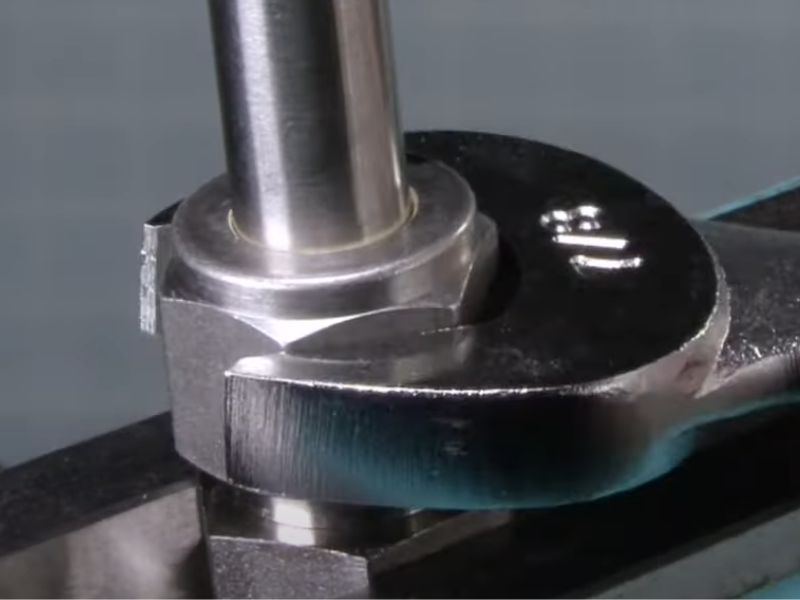Leaks and premature failures in piping systems don’t just interrupt operations—they cause costly downtime, safety risks, and unnecessary maintenance expenses. Among the many connection types used in fluid transfer systems, ferrule fittings stand out for their ability to deliver secure, high-pressure, and corrosion-resistant connections.
This article provides a comprehensive guide to improving the reliability of ferrule fittings. From selecting the right materials and optimizing installation techniques to implementing lifecycle maintenance strategies and exploring future innovations, we’ll uncover proven methods to extend service life and prevent leaks.
Material Selection: Building a Long Service Life Foundation
The choice of materials is the most decisive factor in extending the service life of ferrule fittings. Proper material selection improves pressure resistance, corrosion resistance, and temperature tolerance, ensuring reliable performance even in demanding environments.

Optimizing Body Materials
Ferrule fitting bodies are typically manufactured from stainless steel, duplex steel, or nickel-based alloys. Each material offers unique benefits in terms of mechanical strength, corrosion resistance, and cost efficiency.
Comparison of Common Body Materials for Ferrule Fittings
| Material | Yield Strength (MPa) | Temperature Range | Corrosion Resistance | Typical Applications |
| 304 Stainless Steel | 205 | –196℃ to 450℃ | Moderate (susceptible to chlorides) | General industrial pipelines |
| 316L Stainless Steel | 220–310 | –196℃ to 450℃ | High (resists chloride corrosion) | Chemical plants, marine systems |
| Duplex Steel 2205 | 450–550 | –50℃ to 300℃ | Excellent in acids and chlorides | Oil & gas, offshore platforms |
| Hastelloy C-276 | 283–355 | –200℃ to 400℃ | Outstanding (80% better than 316L in strong acids) | Harsh chemical & petrochemical |
Matching Seal Element Materials
While the body provides structural strength, the ferrule edge and sealing surface ensure leak-free performance. The correct material for sealing elements can significantly reduce leakage risks.
- Carbon Steel Ferrules: Prone to micro-cracks under high pressure, leading to leakage.
- Alloy Steel Ferrules: With hardness HRC45–50, they cut into the tube wall with precision (0.1–0.3 mm depth), ensuring a reliable mechanical seal.
Comparison of Ferrule Materials
| Ferrule Type | Hardness | Bite Performance | Leakage Risk | Recommended Use |
| Carbon Steel | HRC30–35 | Low | High | Low-pressure, general use |
| Alloy Steel | HRC45–50 | High | Low | High-pressure hydraulic systems |
| PTFE-coated Ferrule | ~ Shore D 55 | Smooth, low friction | Very low | Vacuum systems, extreme temperatures |
Advantages of PTFE-Coated Ferrules
For applications involving low temperature, vacuum, or sensitive environments, PTFE-coated ferrules provide unique benefits:
- Low friction: Coefficient of friction as low as 0.04 reduces tube wall damage.
- Wide temperature range: Reliable performance from –200℃ to +260℃.
- Smooth installation: Prevents scratches during assembly, maintaining long-term sealing integrity.
Installation Process: Ensuring Reliable Sealing
Even when ferrule fittings are made from high-performance materials, improper installation remains the leading cause of leakage failures. Research shows that more than 60% of connection leaks are directly linked to cutting errors, poor torque control, or vibration loosening. By standardizing installation processes, companies can significantly improve sealing reliability and extend service life.
Standardized Tube Preparation
Cutting Accuracy Using the wrong cutting method creates uneven edges, burrs, or heat damage. Abrasive wheels and flame cutting should be avoided, as they weaken the tube’s surface structure. Instead, dedicated tube cutters maintain precise squareness within ≤0.5 mm and limit burr height to ≤0.1 mm. This ensures the ferrule bites evenly into the tube wall.
Tube Rounding Ovality is a hidden factor that often leads to poor sealing. A rotary tube re-rounder can restore circularity by applying 360° uniform pressure. Test results show that when ovality decreases from 1.2% to 0.3%, leakage probability is reduced by over 90%.
Cleaning Standards Contamination inside the tube can scratch sealing surfaces or obstruct the ferrule’s bite. Using ultrasonic cleaning with trichloroethylene achieves high cleanliness levels. For ferrule fittings, the minimum requirement is NAS1638 Class 5. Studies confirm that if residual particles exceed 50 μm, the risk of leakage is three times higher.

Table: Tube Preparation Standards for Ferrule Fittings
| Process Step | Recommended Standard | Effect on Reliability |
| Cutting | Tube squareness ≤0.5 mm, burr height ≤0.1 mm | Prevents uneven sealing surface |
| Rounding | Ovality ≤0.3% | Reduces leakage risk by 90% |
| Cleaning | NAS1638 Class 5 (max particle size <50 μm) | Prevents scratches & micro-leaks |
Precise Torque Control
The tightening torque applied to ferrule nuts is a critical factor in achieving leak-free operation. Over-tightening may crack the ferrule or deform the tube, while under-tightening leads to insufficient sealing force. A three-step tightening procedure ensures consistent results:
- Pre-tightening: Hand-tighten until the nut contacts the body. Torque: 5–10 N·m.
- Positioning: Use a calibrated torque wrench.
- Φ6 mm tube: 25–30 N·m
- Φ12 mm tube: 60–70 N·m
- Φ25 mm tube: 180–220 N·m
- Verification: Disassemble and confirm bite depth ≥0.1 mm, evenly distributed, with no axial displacement.
Vibration Protection Measures
Industrial systems often operate in high-vibration environments, especially in construction machinery, offshore drilling, and aerospace applications. Without vibration protection, ferrule fittings may gradually loosen, leading to micro-leaks or catastrophic failures.
Recommended Solutions:
- Elastic ferrules: Designed with spring elements, they absorb vibration displacements of 50–100 μm, maintaining sealing integrity.
- Self-locking nuts (Spiralock): Their wedge-thread design increases the friction coefficient, boosting vibration loosening resistance up to 3x higher than conventional nuts.
- Anti-vibration supports: Installing rubber isolators within 100 mm of the fitting reduces vibration transmission by up to 75%.
Table: Vibration Control Solutions for Ferrule Fittings
| Solution | Vibration Absorption | Benefit |
| Elastic Ferrule | 50–100 μm | Prevents bite loosening under oscillation |
| Spiralock Nut | 3x higher resistance | Avoids thread loosening |
| Rubber Support Pad | –75% transmission | Extends fitting service life |
Maintenance Strategies: Managing the Entire Lifecycle
Ferrule fittings do not fail only because of poor design or materials—lack of systematic maintenance is one of the top causes of premature leakage and downtime. A lifecycle approach that combines preventive maintenance, smart monitoring, and structured failure analysis ensures maximum reliability and long service life.
Risk-Based Maintenance (RBM)
Risk-Based Maintenance (RBM) tailors inspection and replacement intervals to the severity of operating conditions. This avoids both under-maintenance (leading to leaks) and over-maintenance (wasting resources).
RBMMaintenance Intervals for Ferrule Fittings
| Class | Condition Type | Recommended Actions |
| A | High-pressure / High-temp / Corrosive | Pressure test every 500 hours; Replace seals every 2,000 hours |
| B | Medium pressure / Normal conditions | Visual inspection every 1,000 hours; Leak test every 5,000 hours |
| C | Low pressure / Clean media | Routine checks every 2,000 hours; Full assessment every 10,000 hours |
Intelligent Monitoring
With the rise of IoT (Internet of Things) monitoring systems, real-time data can prevent small issues from becoming costly failures. By tracking key operating parameters, operators can detect early signs of ferrule fitting degradation.
- Pressure Spikes: Alerts when pressure changes faster than 5 MPa/s, indicating transient shocks that may compromise sealing.
- Temperature Rise: Infrared sensors flag when surface temperatures increase >15℃ above baseline, often a precursor to leakage.
- Vibration Analysis: Accelerometers track frequency bands between 100–500 Hz. A 30% increase signals potential loosening of ferrule connections.
Table: Intelligent Monitoring Parameters for Ferrule Fittings
| Parameter | Monitoring Method | Alert Condition | Risk Prevented |
| Pressure spike | Pressure sensor | >5 MPa/s | Seal rupture risk |
| Temperature | Infrared thermography | +15℃ rise | Thermal expansion failure |
| Vibration | Accelerometer | +30% energy | Thread loosening, micro-leak |
Failure Mode and Effects Analysis (FMEA)
A structured FMEA approach identifies the most common failure causes in ferrule fittings and defines targeted countermeasures.
Seal Wear (45%)
- Cause: Ferrule edge erosion or tube scratches.
- Solution: Laser cladding repairs, boosting hardness up to HRC60 for extended sealing life.
Thread Loosening (30%)
- Cause: Torque relaxation or vibration.
- Solution: Switch to trapezoidal threads, providing 50% higher self-locking ability than standard threads.
Material Corrosion (25%)
- Cause: Exposure to aggressive media and elevated temperatures.
- Solution: Apply nickel-phosphorus alloy coating (0.1 mm thick) for advanced electrochemical protection.
Table: Common Failure Modes in Ferrule Fittings and Solutions
| Failure Mode | Frequency | Root Cause | Recommended Solution |
| Seal Wear | 45% | Edge erosion, scratches | Laser cladding (HRC60 hardness) |
| Thread Loosening | 30% | Vibration, torque loss | Trapezoidal self-locking threads |
| Material Corrosion | 25% | Aggressive media, heat | Nickel-phosphorus protective coating |
Common Leakage Types and Solutions
Even when ferrule fittings are manufactured with premium materials and installed according to standards, leakage can still occur under real-world operating conditions. Understanding the failure mode, root cause, and corrective action is the most effective way to minimize downtime and extend service life.
Static Leakage
Cause:
Static leakage usually occurs when the ferrule does not fully bite into the tube wall during installation. Insufficient tightening or improper alignment prevents the ferrule edge from creating a secure mechanical seal.
Solution:
Reinstall the fitting, ensuring the nut is tightened 1–1.25 full turns beyond finger-tight. This guarantees the ferrule edge penetrates the tube wall adequately, forming a leak-free seal.
Dynamic Leakage
Cause:
Dynamic leakage is typically caused by vibration, pulsation, or thermal cycling in the system. Under such conditions, standard ferrules may gradually loosen, creating micro-gaps that lead to fluid leaks.
Solution:
Install self-locking nuts such as Spiralock, which resist loosening under vibration. Additionally, fit anti-vibration supports or dampers near the connection point to absorb oscillations.

Thread Leakage
Cause:
Thread leakage occurs when the sealing gasket inside the threaded area is damaged, deformed, or degraded due to high pressure or temperature fluctuations. Poor-quality gaskets may also fail prematurely.
Solution:
Replace the gasket with a spiral-wound gasket, which combines metal strength with filler flexibility. Increase torque by 10% to ensure uniform contact pressure across the sealing surface.
Corrosion Leakage
Cause:
When the fitting material is incompatible with the fluid medium or operating environment, corrosion can gradually weaken the sealing surface. For example, 304 stainless steel corrodes quickly in sulfur-rich or chloride-heavy environments.
Solution:
Upgrade to high-alloy materials such as Hastelloy C-276 or Duplex Steel 2205, both of which provide exceptional resistance against acidic and chloride-containing fluids.
Common Leakage Types and Corrective Measures
| Leakage Type | Root Cause | Recommended Solution |
| Static Leakage | Ferrule not fully biting into tube | Reinstall, tighten 1–1.25 turns |
| Dynamic Leakage | Vibration-induced loosening | Self-locking nuts + anti-vibration supports |
| Thread Leakage | Gasket damage or deformation | Replace with spiral-wound gasket, torque +10% |
| Corrosion Leak | Wrong material for environment | Upgrade to Hastelloy C-276 or Duplex 2205 |
Future Technology Trends
The ferrule fitting industry is evolving as new materials, surface treatments, and digital technologies reshape performance expectations. Future designs will not only focus on mechanical strength but also on longer service life, self-monitoring capabilities, and adaptability to extreme environments.
Nanocoating Technology
Overview:
Nanocoatings are applied to ferrule surfaces to improve resistance against corrosion, fouling, and microbial contamination. A common solution is titanium dioxide (TiO₂) nanocoating, which provides self-cleaning and antibacterial properties.
Benefits:
- Prevents corrosion buildup in harsh chemical or marine environments.
- Creates a hydrophobic layer, reducing dirt adhesion.
- Ideal for food, beverage, and pharmaceutical processing systems where hygiene is critical.
Additive Manufacturing (3D Printing)
Overview:
Selective Laser Melting (SLM) and other additive manufacturing techniques allow ferrule fittings to be produced with complex internal flow paths. This eliminates sharp edges and reduces turbulence inside the connection.
Benefits:
- 30% lower flow resistance, improving energy efficiency.
- 40% weight reduction, beneficial for aerospace and offshore systems.
- Enables rapid prototyping and custom designs for special applications.
Digital Twin Technology
Overview:
Digital twins use 3D models combined with real-time sensor data to simulate how ferrule fittings behave under pressure, vibration, and thermal stress. This allows predictive maintenance and optimized design before physical installation.
Benefits:
- Improves stress distribution by optimizing ferrule bite geometry.
- Identifies weak points in sealing zones before failure occurs.
- Increases sealing stress uniformity up to 95%.
Comparison of Emerging Technologies
| Technology | Key Benefit | Typical Industry Application |
| Nanocoating (TiO₂) | Self-cleaning, antibacterial | Food, pharma, marine systems |
| Additive Manufacturing (SLM) | Lower flow resistance, lightweight | Aerospace, oil & gas, custom solutions |
| Digital Twin Modeling | Predictive maintenance, design optimization | Nuclear, refinery, high-risk industries |
Conclusion
Ferrule fittings remain one of the most critical components in industrial fluid transfer systems. Their long-term reliability depends on the right combination of material selection, precision installation, and lifecycle maintenance strategies. By applying advanced solutions, companies can extend service life by 3–5 times while reducing leakage rates to less than 0.1%.
At Topa, we provide a full range of high-quality ferrule fittings engineered for demanding applications in oil & gas, chemical processing, power generation, construction, and more. Contact our team for product catalogs, technical support, or customized solutions designed to meet your exact requirements.
FAQ
What are ferrule fittings used for in industrial systems?
Ferrule fittings are used to create secure, leak-free connections in hydraulic and fluid transfer systems. They are widely applied in oil & gas, chemical processing, power generation, and aerospace.
How do I choose the right material for ferrule fittings?
Material selection depends on the operating environment. Stainless steel works well for general use, duplex steel resists chlorides, and Hastelloy C-276 is recommended for highly corrosive acids.
What causes ferrule fittings to leak?
Common causes include improper installation, vibration loosening, damaged gaskets, and material corrosion. More than 60% of leaks are related to cutting or torque errors during assembly.
How can I extend the service life of ferrule fittings?
Use high-performance alloys, ensure proper tube preparation, apply precise torque control, and adopt risk-based maintenance. These measures can extend service life by 3–5 times.
What maintenance practices reduce leakage risk in ferrule fittings?
Implement risk-based maintenance (RBM), monitor pressure, temperature, and vibration using IoT sensors, and perform regular inspections of seals and threads to detect wear early.
What new technologies improve ferrule fitting reliability?
Future solutions include nanocoatings for corrosion resistance, additive manufacturing for optimized flow design, and digital twin models for predictive maintenance.







